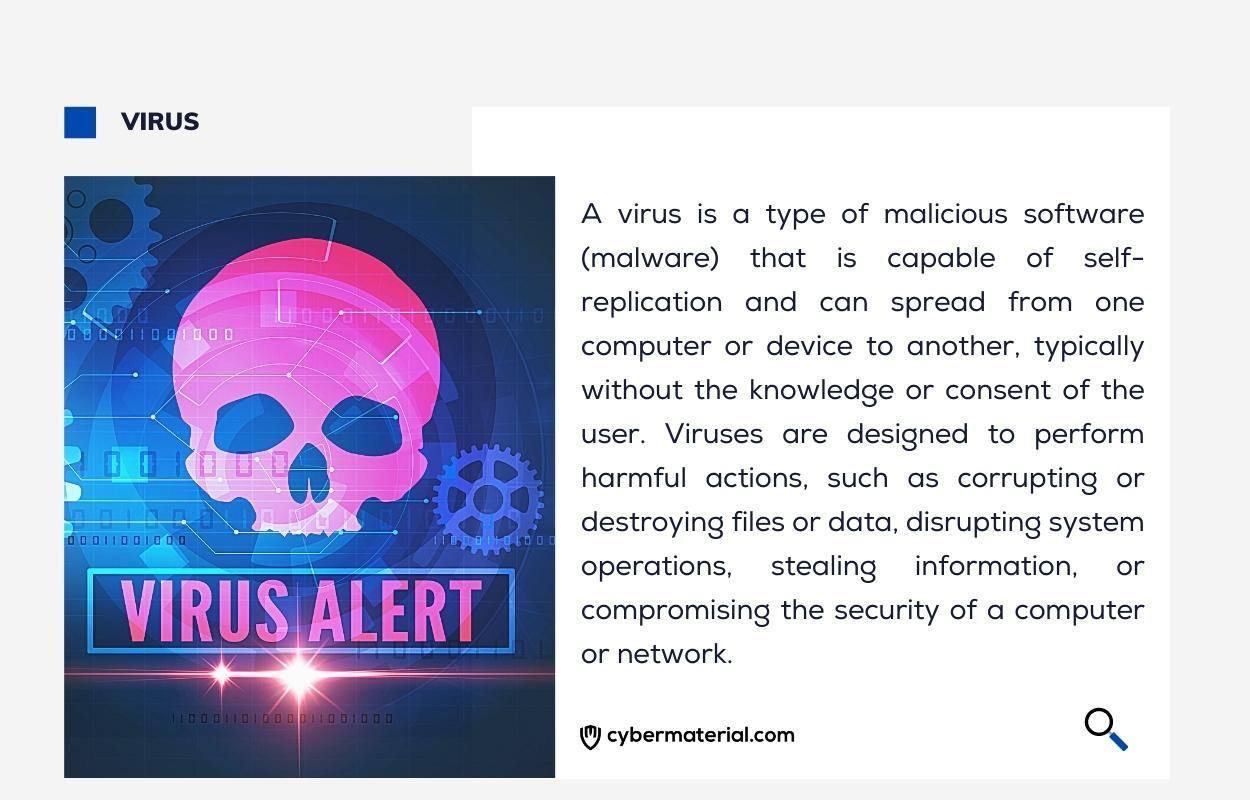
A virus is a type of malicious software (malware) that is capable of self-replication and can spread from one computer or device to another, typically without the knowledge or consent of the user.
Viruses are designed to perform harmful actions, such as corrupting or destroying files or data, disrupting system operations, stealing information, or compromising the security of a computer or network.
Viruses are often created by cybercriminals with malicious intent, and they are typically attached to other files or programs, disguised as legitimate files or distributed through various means, such as email attachments, infected USB drives, or infected websites.
Once a virus infects a computer or device, it can replicate itself and spread to other files, folders, or systems, potentially causing widespread damage and disruption.
Viruses are typically designed to exploit vulnerabilities in operating systems, software, or applications to gain unauthorized access or control over a computer or network. They can be classified into various types, such as file viruses, boot sector viruses, macro viruses, polymorphic viruses, and more, based on their behavior and characteristics.
To protect against viruses, it is important to use antivirus software, keep software and operating systems up-to-date with the latest patches and security updates, avoid downloading or opening suspicious attachments or files, and exercise caution when browsing websites or clicking on links.
Regular data backups and user awareness training can also help mitigate the risks associated with viruses and other types of malware.
The post What’s a Virus? (Malware) first appeared on CyberMaterial.


